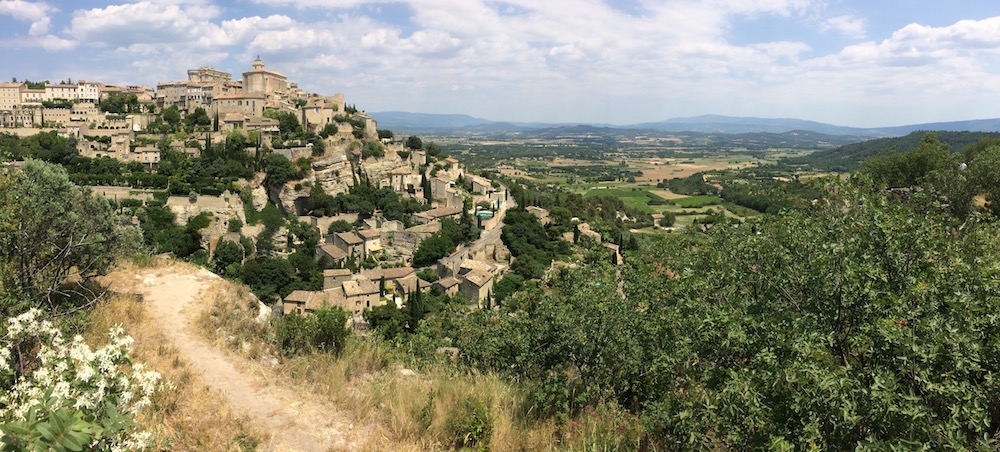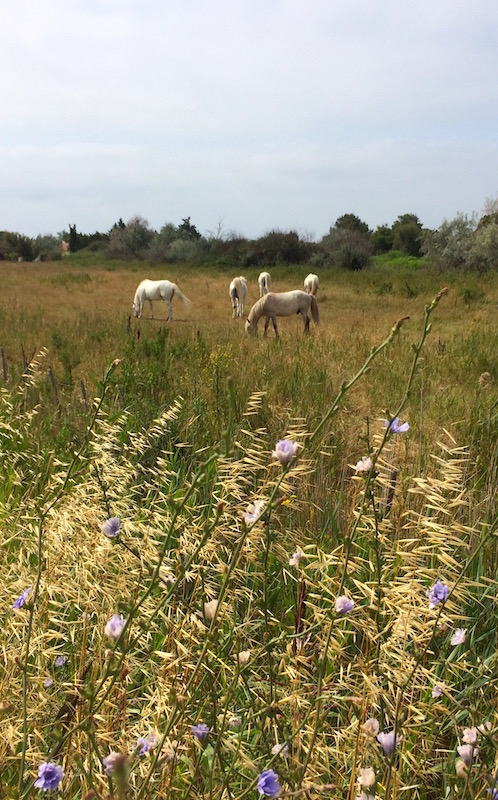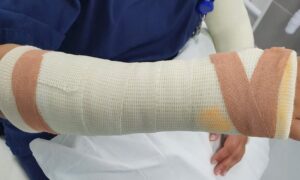Provence, the place where sunflowers fill the fields with gold and the sky is blue. A recent visit filled my soul with color ….
 A week’s vacation can only give you a glimpse of the area’s treasures when the region is the size of Provence.
A week’s vacation can only give you a glimpse of the area’s treasures when the region is the size of Provence.
It stretches from the banks of the Rhône in the west to Italy’s border in the east and is connected by Auvergne-Rhône-Alpes in the north. The Mediterranean caresses its southern coastline and helps create the wonderful climate.
As we explored, I turned to my husband Martin and said, “Seriously, what doesn’t Provence have? It has mountains, rolling hills, vineyards, olive groves, lavender fields, sunflowers, coastline, cute towns and villages ….”
Living in the flat land of the Netherlands gives you a craving for hills and mountains, and Provence has both.
The Luberon – a UNESCO nature reserve and national park within the Vaucluse of central Provence – is one such area. It’s become famous within the last few decades with the Brits and Americans through the books of Peter Mayle who chronicles his life as an expat there (“A Year In Provence”).
To visit this area, a car is essential and once you are on the road with the views of hill-top towns and rolling fields of purple, life feels good.
The hilltop towns are easy to imagine as movie sets (many of them actually are!) they are so picturesque, with yellow limestone buildings, winding cobbled streets and window boxes of red geraniums placed thoughtfully for those perfect photo opportunities.
Cute towns
Many of the towns are listed in the Plus Beaux Villages de France (Most Beautiful Villages in France) and deservedly so.
• Gordes stands protectively on a rocky outcrop surveying the area, as it has done so since the Middle Ages. It is now a popular place for the wealthy but once within the walls of the town time stands still. The large fortified chateau overlooks the town and its little cafes and stores. Close by Gordes is the picturesque Sénanque Abbey, a working Cistercian monastery that grows lavender and tends bees for their income.
• Bonnieux is enfolded by vineyards and orchards, is crowned with an ancient church and climbs up the hillside as if it once tried to escape attackers. It has many restaurants, cafes and hotels and when we visited the runners taking part in an orienteering race impressed us, as they ran down cobbled streets that we were struggling to walk up!
• Lacoste is a step into history with its castle once owned by the Marquis de Sade and now home and renovation project of fashion designer, Pierre Cardin. The village is just that, a village with a few galleries and cafes, but every year it hosts a popular musical and theatrical festival.
• Rousillion is a paint-box village perched over cliffs of ochre, and if you are looking for the “wow factor” then this little village has it! The vision of its ice cream colored houses standing out against the orange earth and the blue sky is incredible. The ochre quarry is no longer producing but provides a scenic trail and there are plenty of restaurants to relax at, and brush off the red dust from your shoes afterwards.
There are many more, equally stunning little villages worth exploring in the Luberon area. They are filled with restaurants, cafes, galleries, great stores and usually a twice-weekly market, where you can purchase some of Provence’s delicious produce.
Continuing on the theme of mountains, the Vaucluse has its “beast,” Mont Ventoux officially part of the Alps at 1,912 meters, although it’s not attached. The area is another UNESCO site, recognized because of its bio-diversity and is recognizable from a distance by its white cap, often mistaken for snow but is actually limestone.
Always a favorite with cyclists who like a challenge, Mont Ventoux has become famous through its involvement in the Tour de France and infamous because of its grueling climb and the toll it takes on the competitors. The Gorges de la Nesque, in the area is also a popular cycling route and less challenging but with scary twists and turns over looking steep drops.
I tip my hat to those who challenge themselves … I preferred the safety of the car!
Flowers
• Lavender ~ You see more fields of purple, if you time your trip for June/July than you can believe. As an amateur photographer I was in heaven and begging my husband to “Stop the car!” every couple of kilometres.
But it’s not just the sight of the fields but also the smell as the sun warms the plants. Then, when you stop for those important photos, you can hear the drowsy hum of the bees as they busy themselves with this local crop.
The south side of Mont Ventoux is lavender heaven and the village of Sault, on the Lavender Trail, provides a great place to stop. From there you can look across the fields of blue and the fields of yellow wheat and be inspired … and plan the next photo stop!
Not far away is the little town of Simiane de la Rotonde, a sleepy little village with a small castle, whose vertical pedestrian alleys provide a shady place to stop for a while before continuing your trip.
• Sunflowers ~ Again, these depend on the time of your visit, but late June/July will supply you with massive fields of smiling sunflowers, all nodding their heads in welcome. I challenge you to not smile back.
• Vineyards ~ Provence is a large producer of wines and has been since the ancient Greeks populated the area. Today rosé is its most popular wine with reds a close second. There are numerous wineries to visit and it’s worth stopping by some of the smaller local producers for a more intimate tasting.
Finally the coastline
We stayed away from the more touristy places in the Cote d’Azur and immersed ourselves in the wildness of the Camargue.
This area south of Arles is the wetland surrounding the mouth of the Rhône, and home to more than 400 bird species including flamingoes, semi-wild white horses and cattle used in the Course Camarguaise (the local version of bullfighting), gardians (cowboys) and mosquitoes.
Most of the land is agricultural, wheat and rice being popular crops, and salt production.
There are two towns in the 820-square-kilometer area, but the walled Medieval city of Aigues Morte is worth a visit.
Saintes-Maries-de-la-Mer provides a beach resort and some history with its large church dedicated to the story of the three Saint Marys arriving by boat after the crucifixion of Christ.
The town is also a pilgrimage site for gypsies, who arrive in droves to celebrate their patron saint Sarah on May 24, when her statue is carried down to the sea.
So Provence does seem to have it all. I left with images of white horses meditating in the heat of the sun, yellow villages climbing up the hillsides, fields of purple and yellow and the sounds of cigales (cicadas) whirring in the olive trees and the sleepy hum of bees busy in the lavender.
Will I be back? You bet!
Photographer/writer Jackie Harding was born in the United Kingdom. As a long-time expat, she lived in Boston for 12 years and in the Netherlands for the past 10 years.
Trained as a nurse in the U.K., she worked for nine years in the United States as a special education teacher’s assistant. Since moving to the Netherlands, she has discovered writing and photography.
Contributing to Dispatches since 2016, Jackie has written about her travels around Europe as well as about expat life and issues.
She also covered the Women’s March Amsterdam.
She’s married to British businessman Martin Harding and is the mother of two international adult children.





















